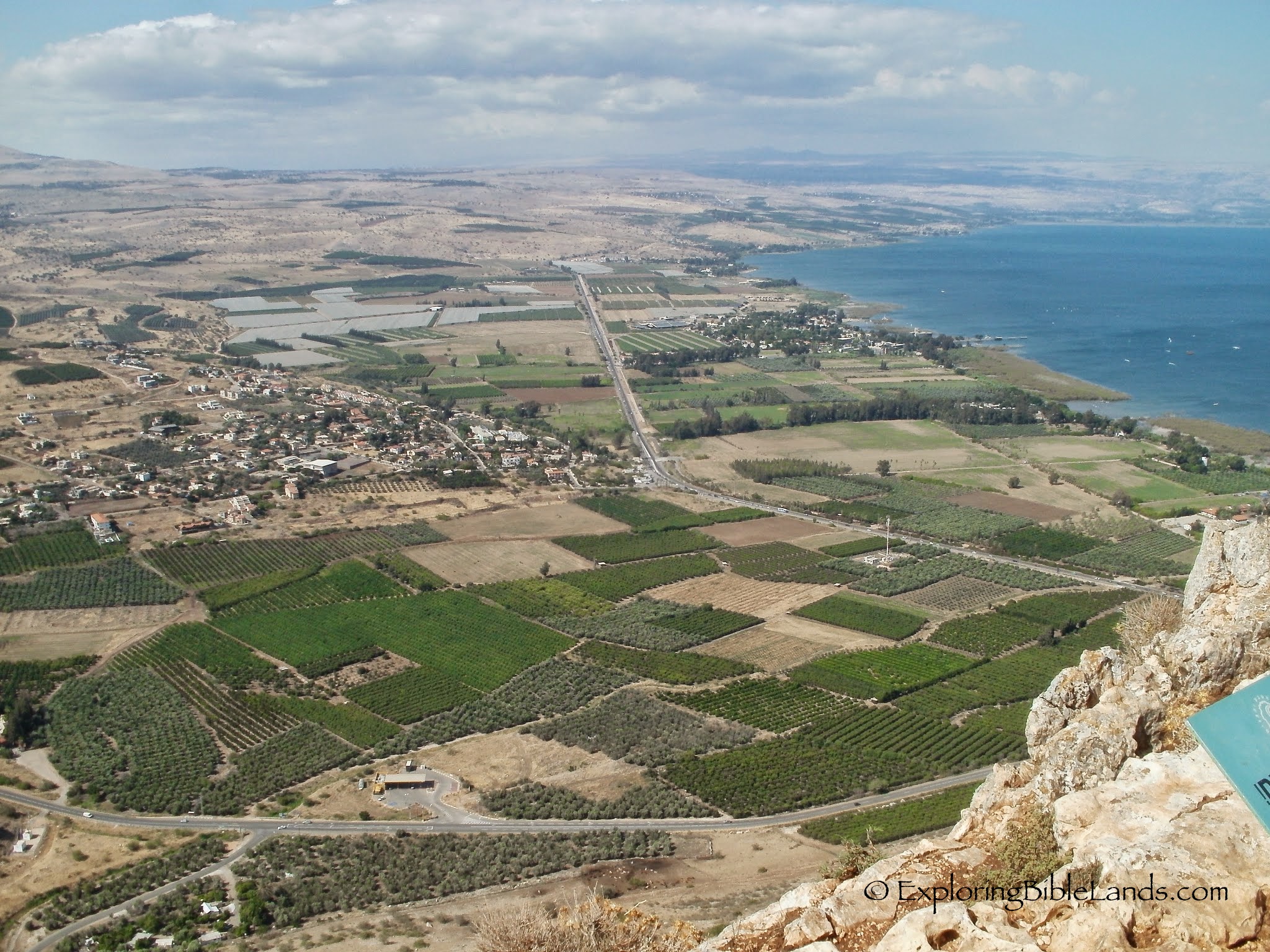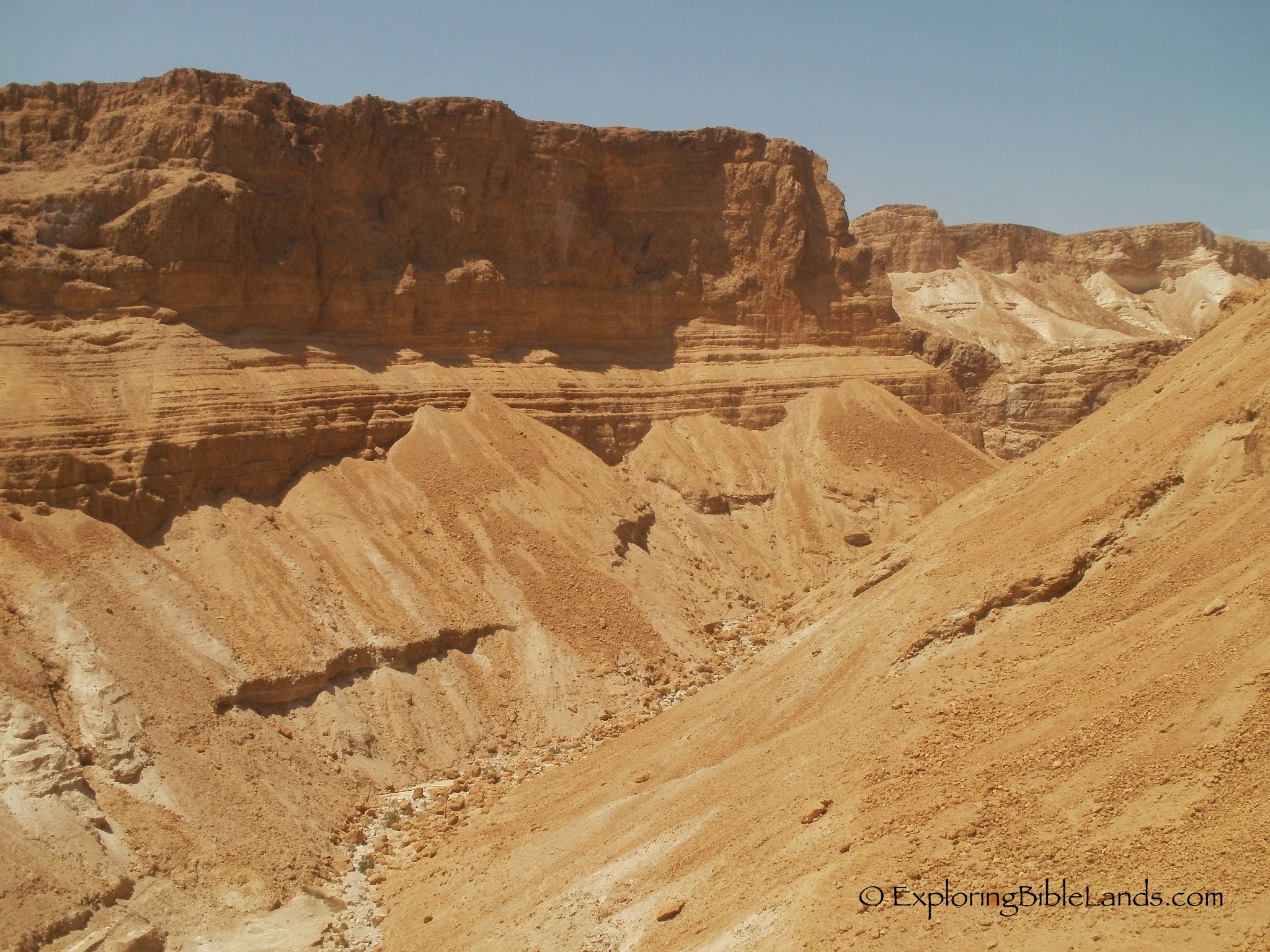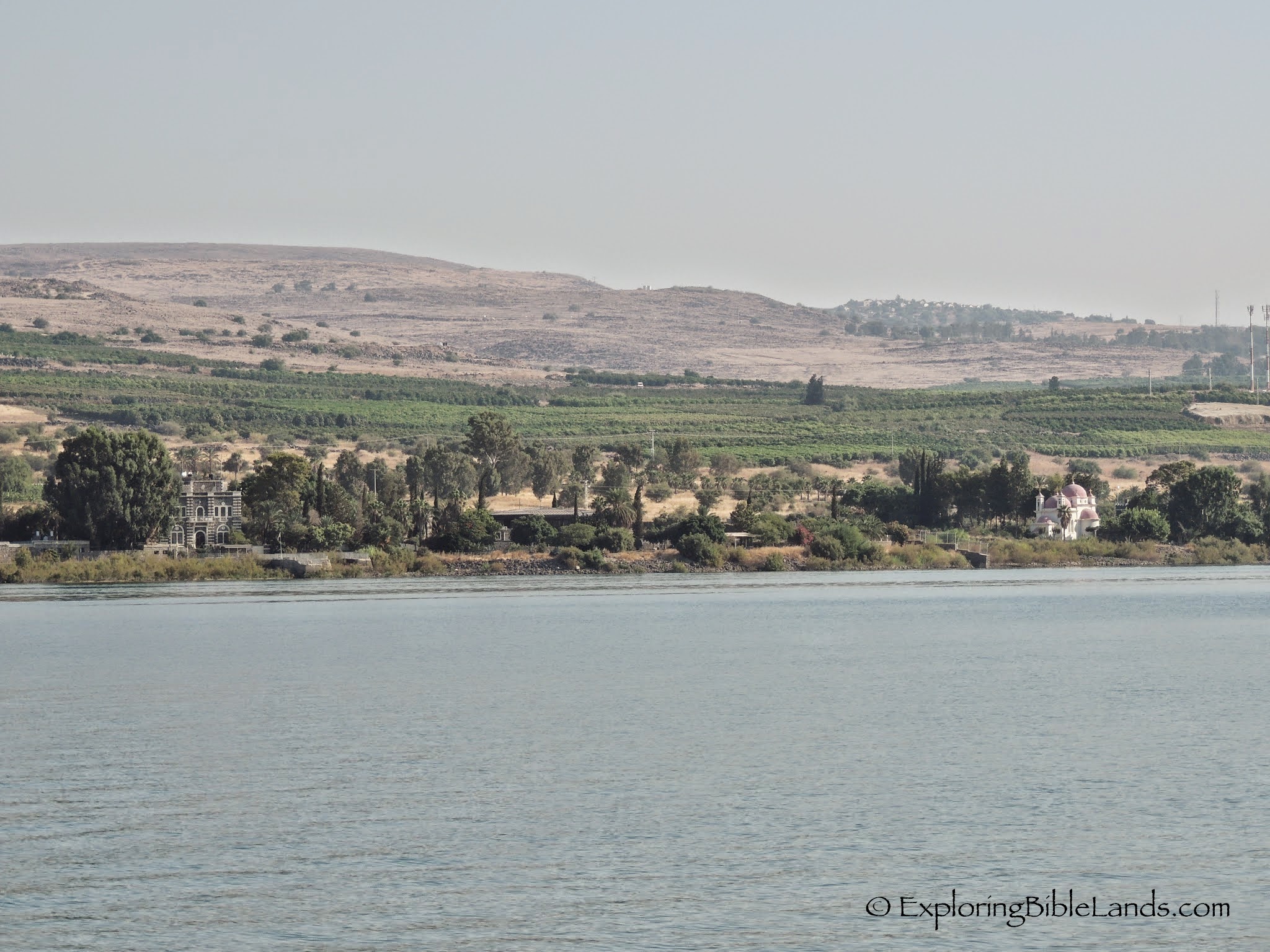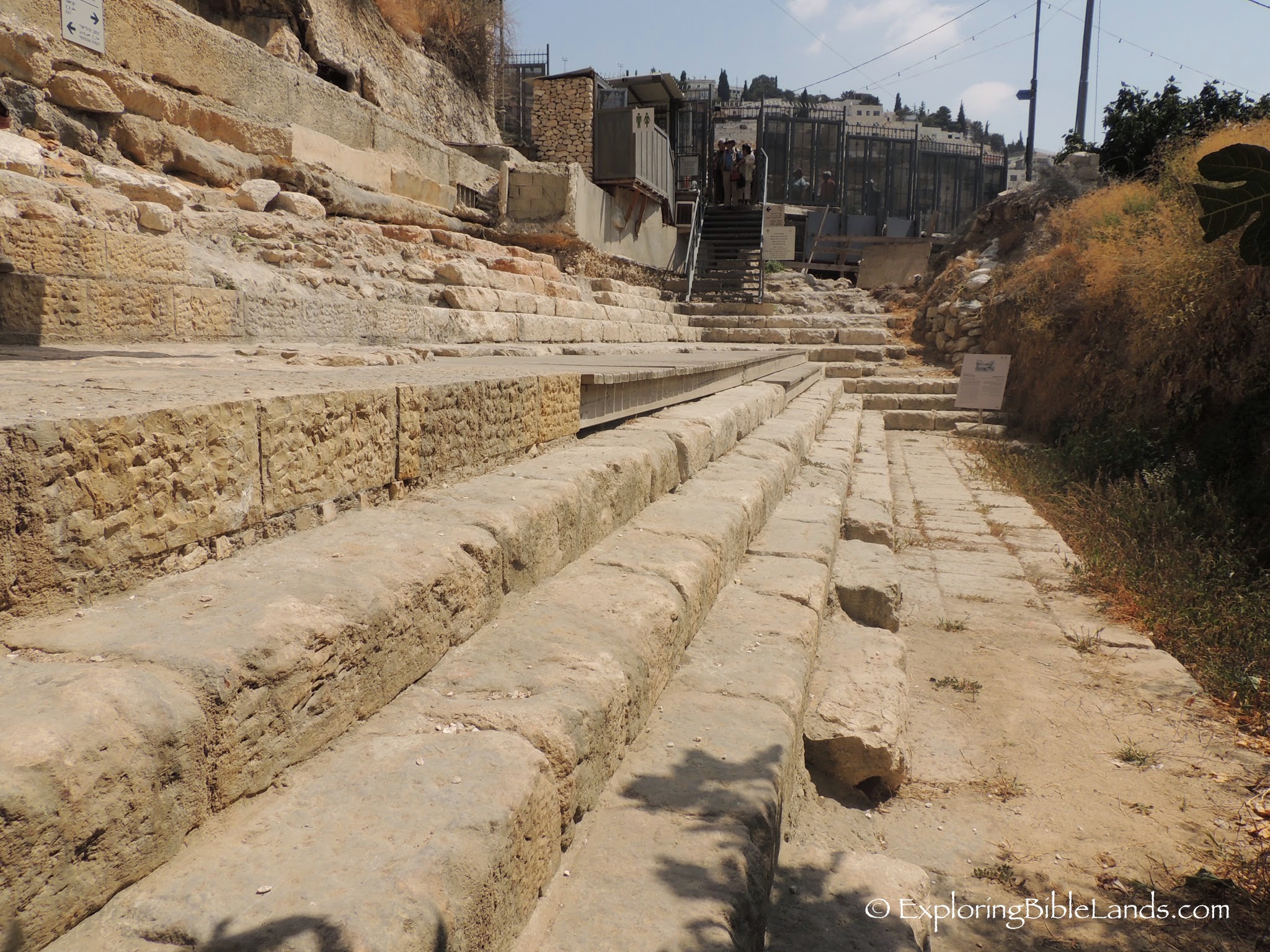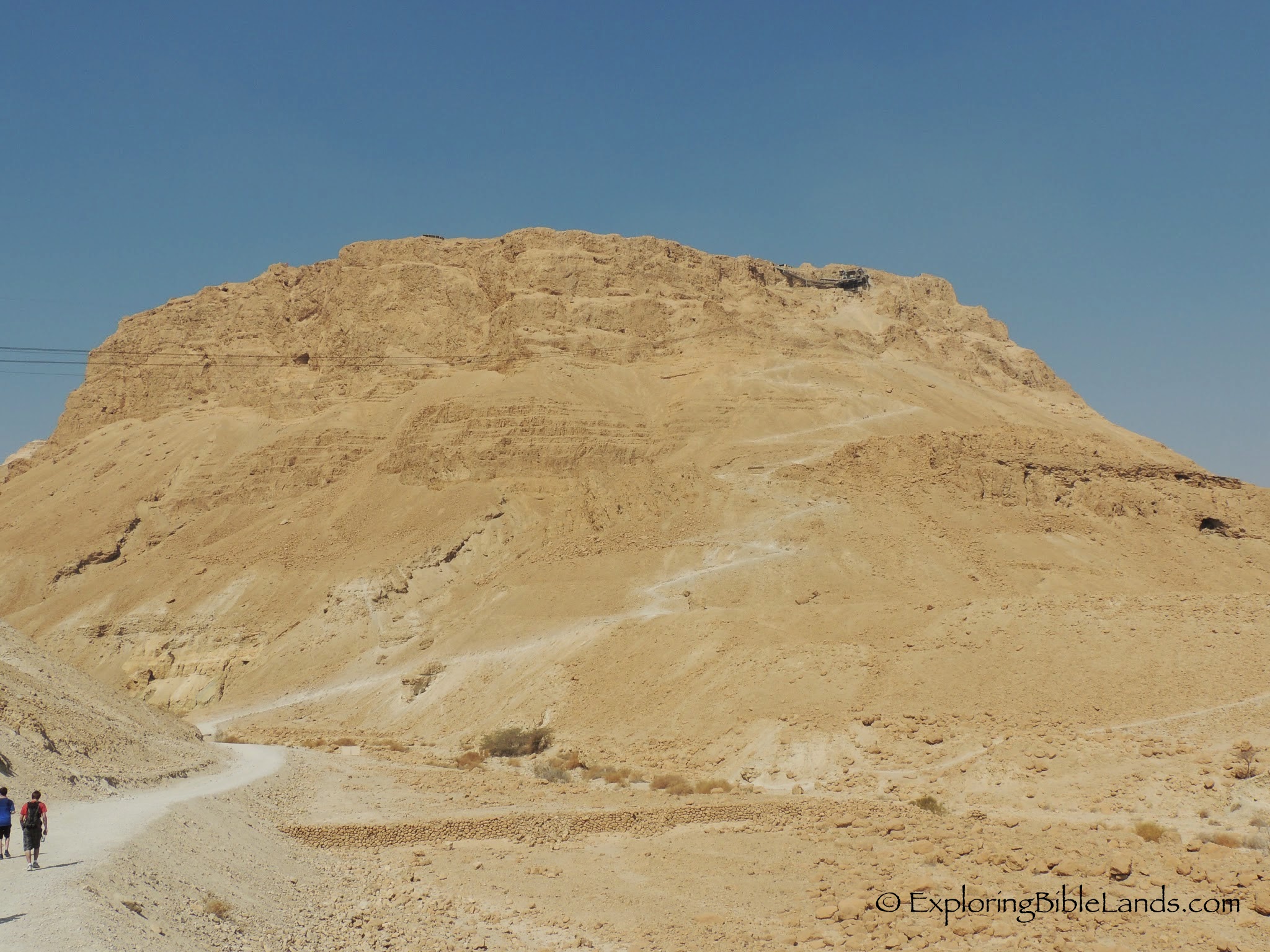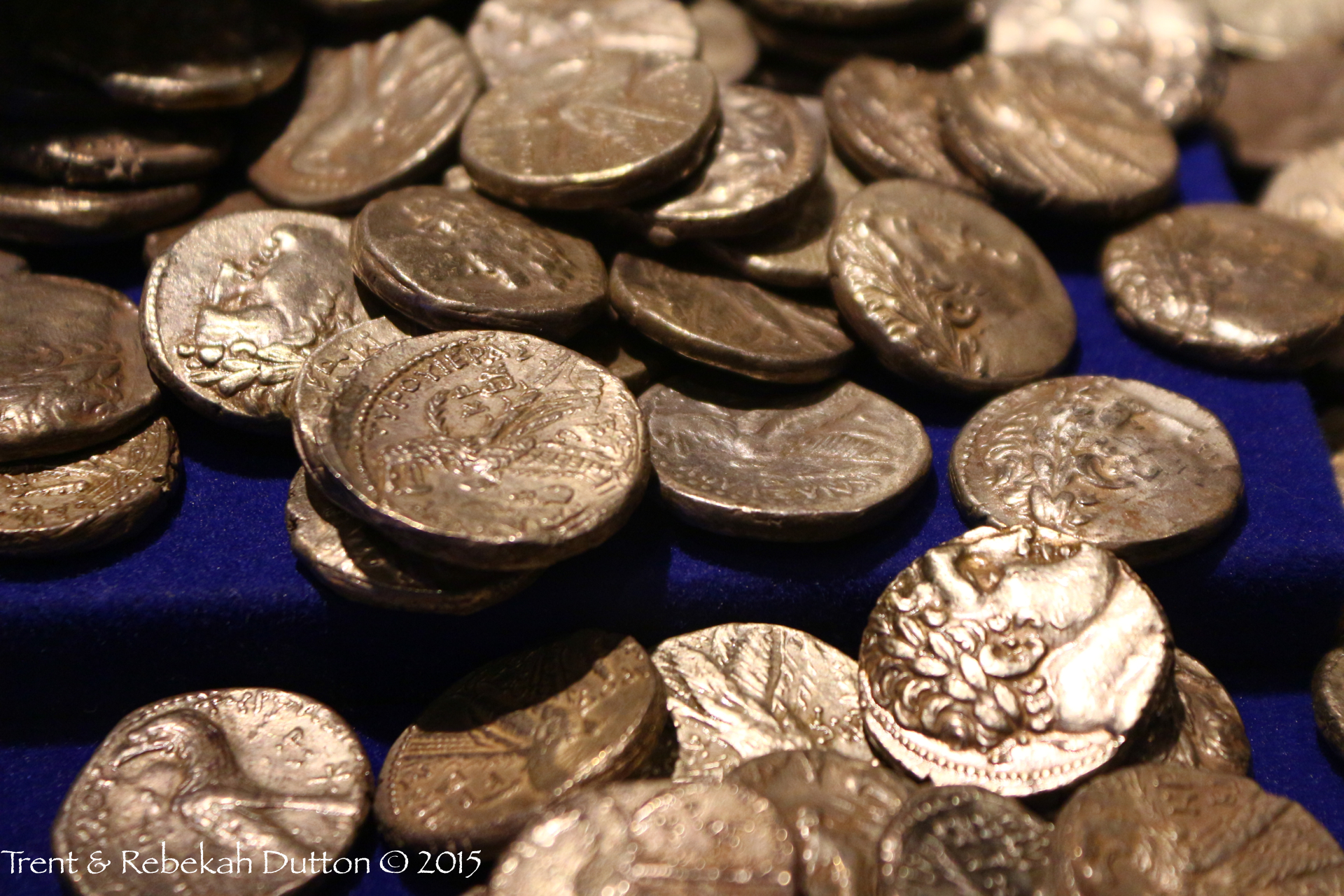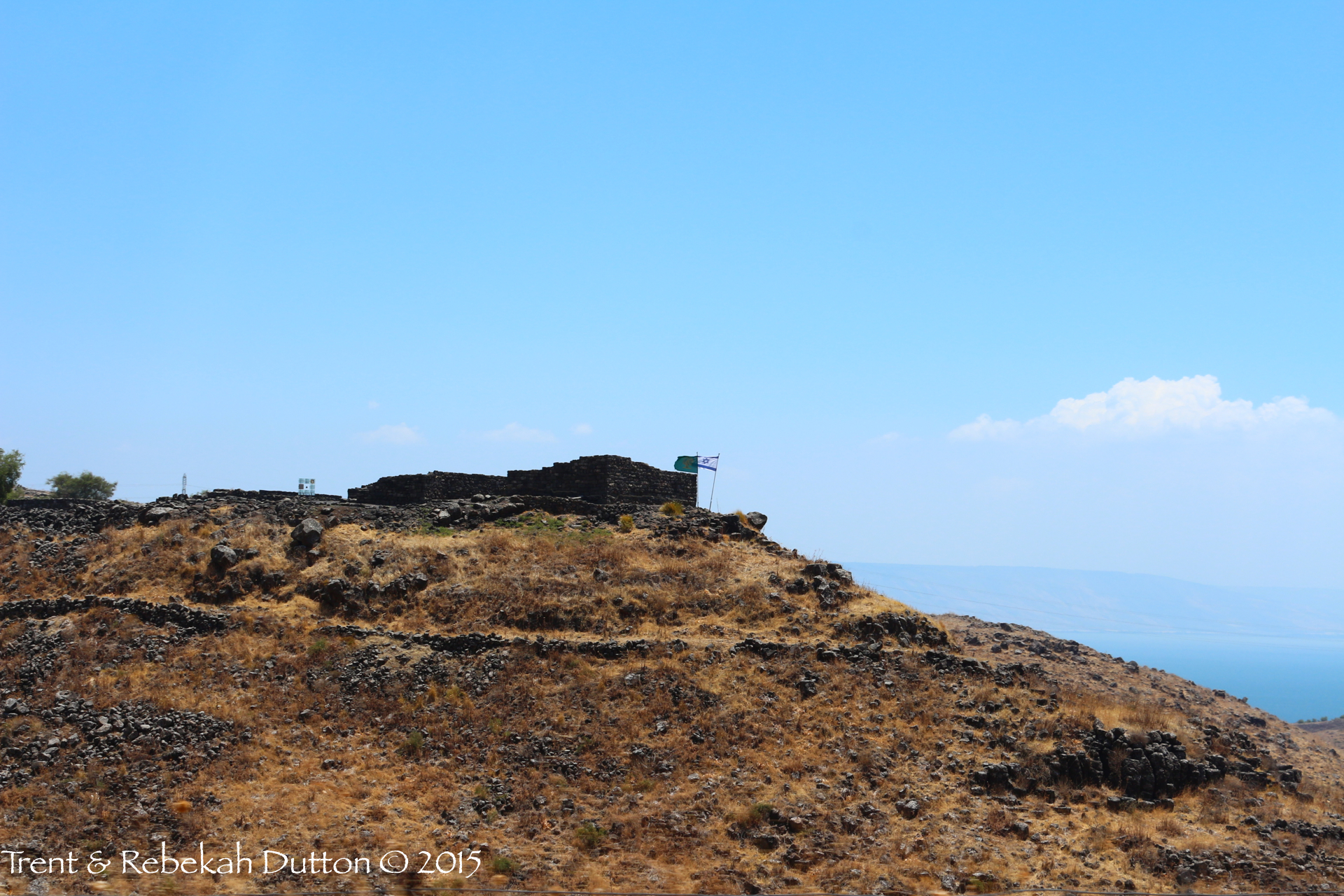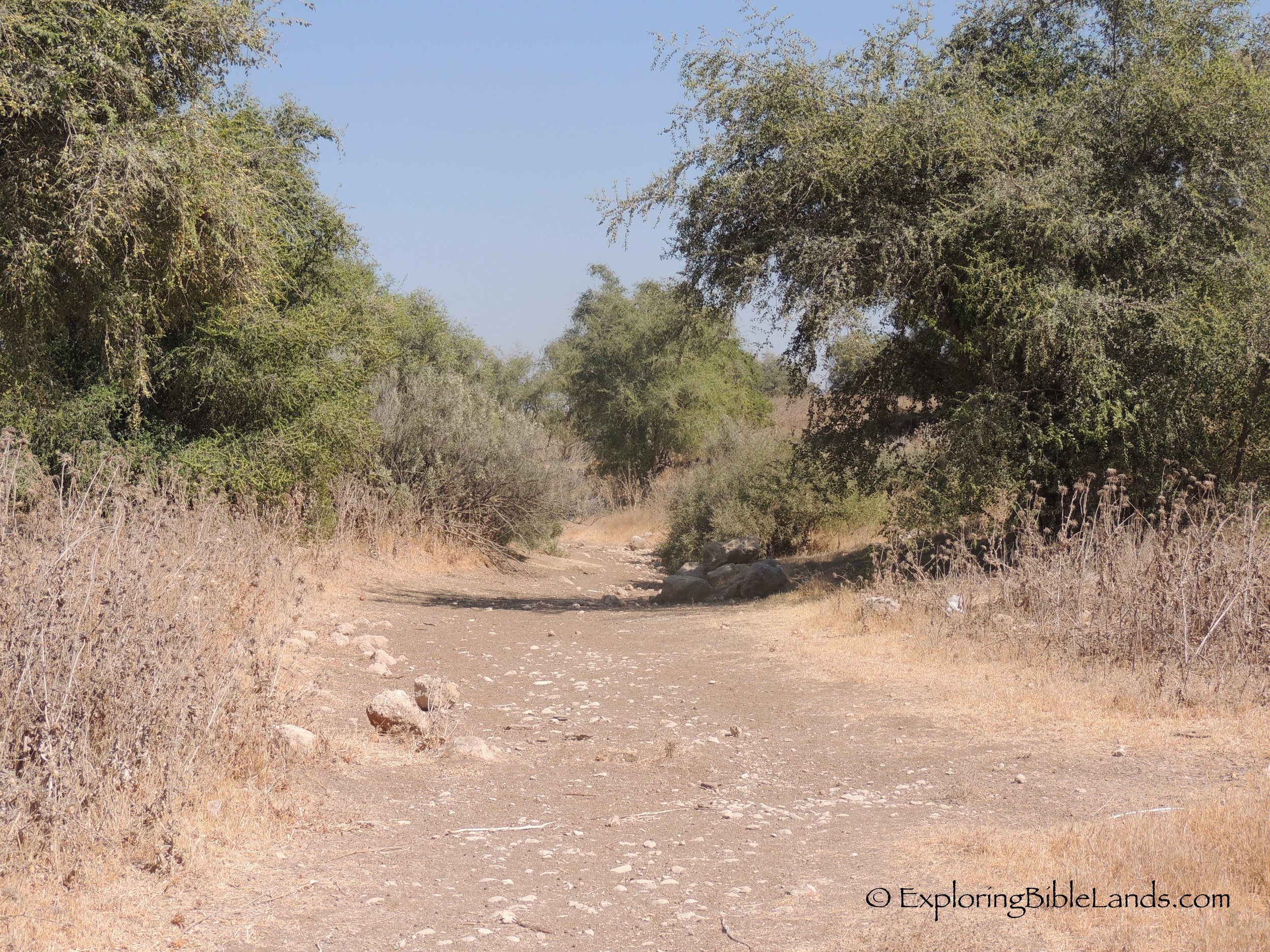 As told in 1 Samuel 17, David went down into the brook in the Valley of Elah to gather stones to battle against the Philistine giant Goliath. In an ironic twist of fate, that same brook winds its way directly past the Philistine city of Gath (Goliath's hometown) about five miles to the west of the battlefield. It is a legitimate possibility that, as a boy, Goliath played in the exact stream where, many years later, his foe would gather ammunition which would eventually be used to kill him. This picture is of the dry river Elah wadi adjacent to the tel at Gath.
As told in 1 Samuel 17, David went down into the brook in the Valley of Elah to gather stones to battle against the Philistine giant Goliath. In an ironic twist of fate, that same brook winds its way directly past the Philistine city of Gath (Goliath's hometown) about five miles to the west of the battlefield. It is a legitimate possibility that, as a boy, Goliath played in the exact stream where, many years later, his foe would gather ammunition which would eventually be used to kill him. This picture is of the dry river Elah wadi adjacent to the tel at Gath.


